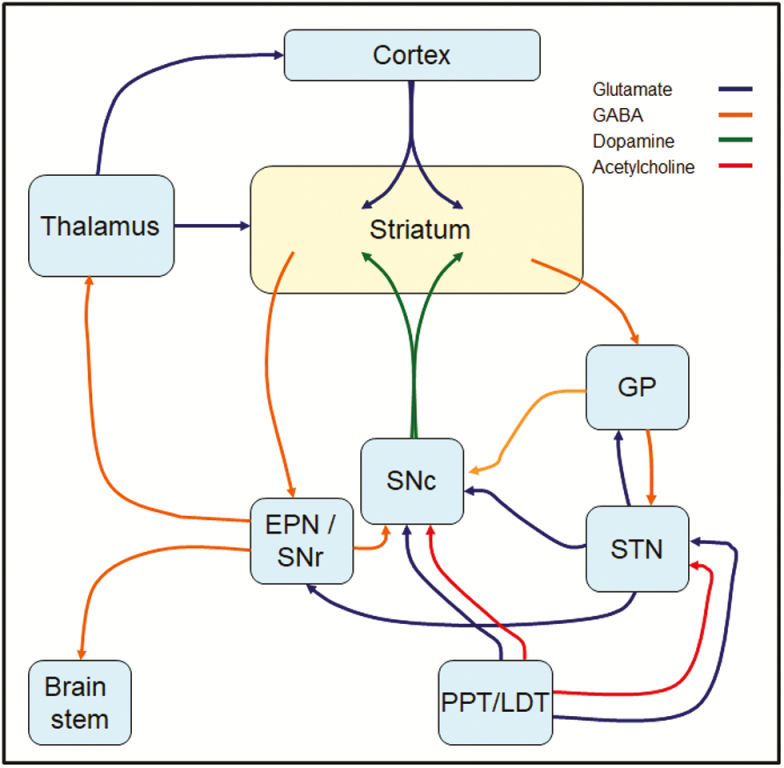Figure 1.
Direct and indirect pathway circuitry within the basal ganglia. Dopaminergic projections from the substantia nigra pars compacta (SNc) and cortical glutamatergic afferents synapse onto the medium spiny neurons (MSNs) of the striatum. These neurons are classically subdivided into the “direct” or “indirect” pathways based on their expression of D1 or D2 dopamine receptors, respectively. Direct pathway D1 MSNs project directly to the enteropeduncular nucleus (EPN; internal segment of the globus pallidus in primates) or the substantia nigra pars reticulata (SNr), and thence to the brain stem or thalamus/cortex, respectively. Indirect pathway D2 MSNs project to the globus pallidus (GP; external segment of the globus pallidus in primates) en route to the EPN and SNr via the SNc or the subthalamic nucleus (STN). Depicted are also the cholinergic projections from the pedunculopontine tegmental (PPT) and laterodorsal tegmental (LDT) nuclei to the striatum, STN and SNc, which in addition to cholinergic interneurons regulate basal ganglia function.

